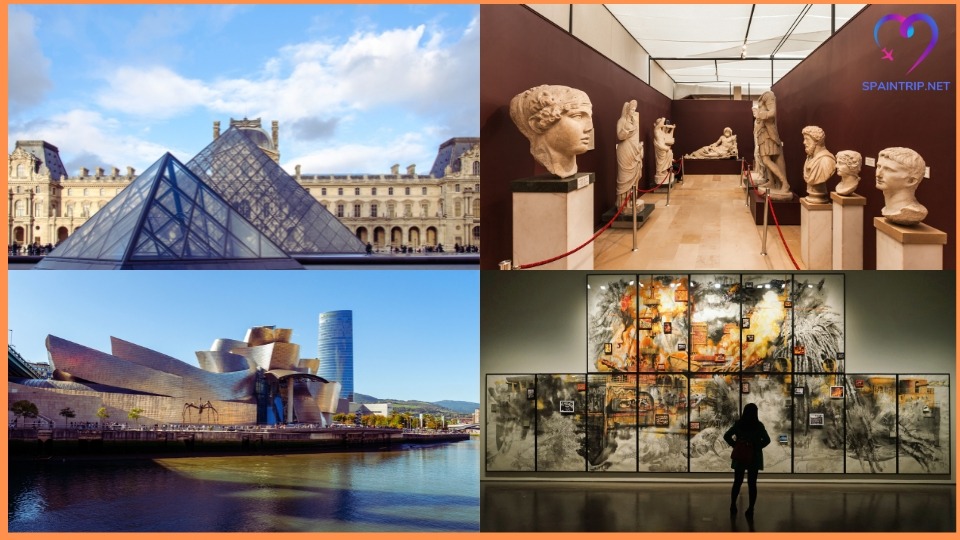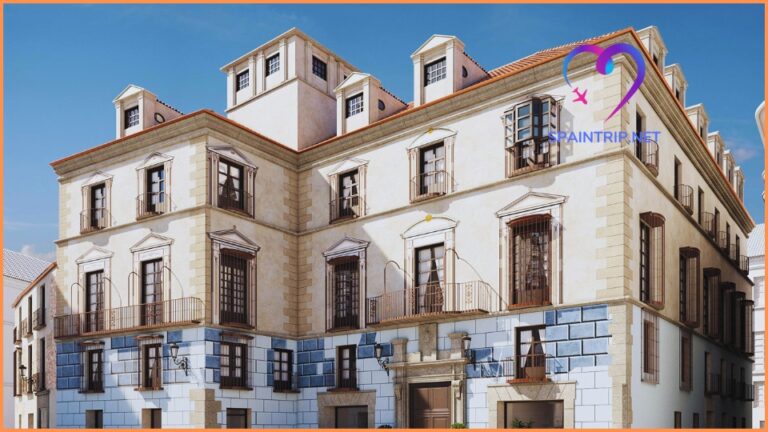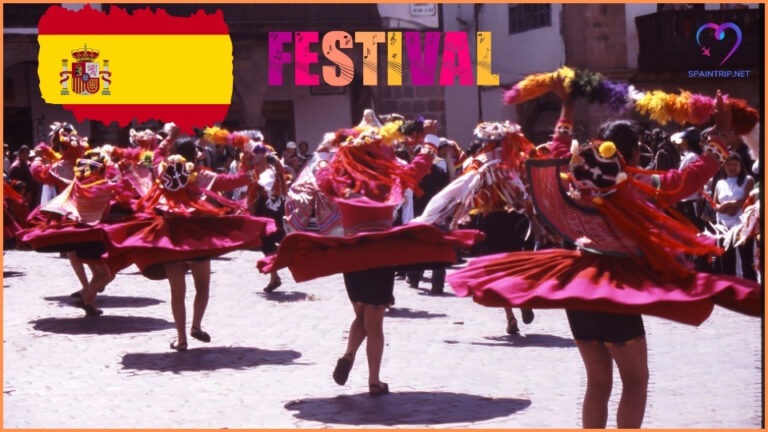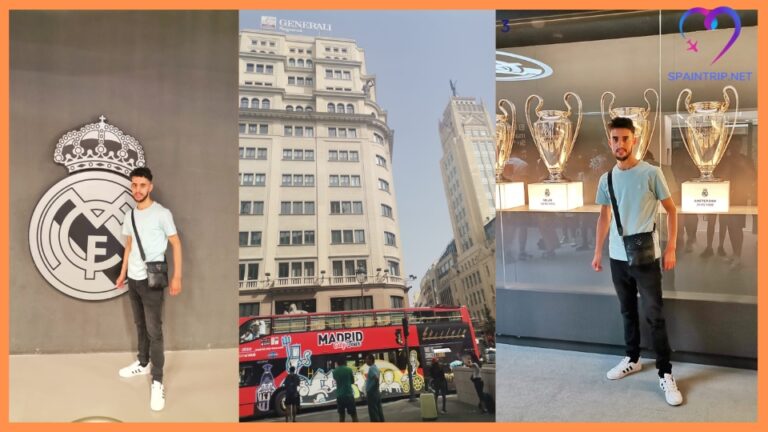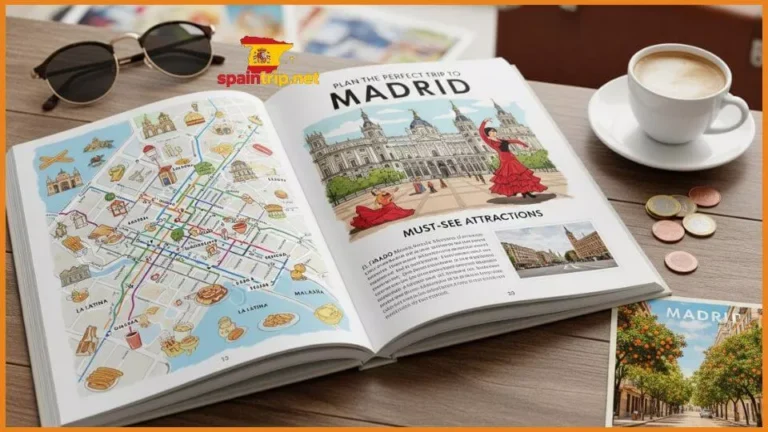The Best Museums in Spain
Spain, a country with a rich history, cultural prominence and artistic importance, is home to some of the best museums in the world. From lovers of art, to history buffs, to everyone in between, Spain’s museums are full of wonder, excitement, and inspiration. Join us as we take a look at some of the best museums in Spain, each a representation of Spain’s rich cultural or historical heritage.
Museo del Prado, Madrid
History of Museo del Prado
Founded in 1819, the Museo del Prado is one of the world’s premier art galleries. This iconic museum in Madrid houses an extensive collection of European art from the 12th to the early 20th century, featuring works by masters like Velázquez, Goya, and El Greco.
Highlights and Must-See Artworks
The Prado’s collection is vast, but some standout pieces include “Las Meninas” by Velázquez, “The Garden of Earthly Delights” by Bosch, and Goya’s “The Third of May 1808.” These masterpieces offer a glimpse into the rich tapestry of European art history.
Museo Nacional Centro de Arte Reina Sofía, Madrid
Historical Background
Opened in 1992, the Museo Reina Sofía is Spain’s national museum of 20th-century art. Located in Madrid, it is part of the city’s “Golden Triangle of Art,” which also includes the Prado and the Thyssen-Bornemisza.
Famous Exhibits
The museum is renowned for housing Pablo Picasso’s monumental work, “Guernica,” a powerful political statement against war. Other notable artists featured include Salvador Dalí and Joan Miró, whose avant-garde pieces push the boundaries of modern art.
Museo Guggenheim, Bilbao
Architectural Marvel
The Museo Guggenheim in Bilbao is as famous for its striking architecture as for its art. Designed by Frank Gehry, the building’s undulating, titanium-clad form is a masterpiece of contemporary design.
Permanent Collections
Inside, the Guggenheim showcases contemporary and modern art, with significant works by artists like Jeff Koons, whose “Puppy” sculpture welcomes visitors, and Richard Serra, known for his massive, immersive installations.
Museo Picasso, Barcelona
Picasso’s Journey
Barcelona’s Museo Picasso offers an in-depth look at the formative years of one of the 20th century’s most influential artists. Established in 1963, the museum holds an extensive collection of Picasso’s early works, highlighting his evolution as an artist.
Notable Pieces
Key pieces include “Science and Charity,” painted when Picasso was just 15, and the “Las Meninas” series, a reinterpretation of Velázquez’s masterpiece. These works provide insight into Picasso’s development and his enduring impact on the art world.
Museo Thyssen-Bornemisza, Madrid
Overview and History
The Thyssen-Bornemisza Museum, opened in 1992, completes Madrid’s “Golden Triangle of Art.” It offers a unique perspective on Western art, filling gaps left by the Prado and Reina Sofía.
Diverse Collection
Its diverse collection spans from the 13th century to the late 20th century, featuring works by Caravaggio, Rubens, and Kandinsky. The Thyssen’s eclectic mix ensures there’s something for every art lover.
Museo Nacional de Arte de Cataluña, Barcelona
Catalan Art History
Housed in the Palau Nacional, the Museo Nacional de Arte de Cataluña (MNAC) is a testament to Catalonia’s rich artistic heritage. It covers a broad spectrum from Romanesque church paintings to modernist masterpieces.
Key Exhibits
Highlights include the Romanesque frescoes, Gothic art, and works by Catalan modernists like Gaudí and Casas. MNAC’s collection provides a comprehensive look at the region’s artistic evolution.
Museo de Bellas Artes, Seville
Historical Context
Founded in 1839, the Museo de Bellas Artes in Seville is one of Spain’s most important art museums. It primarily focuses on Spanish visual arts from the medieval period to the early 20th century.
Significant Works
The museum boasts an impressive collection of works by Baroque masters such as Murillo, Zurbarán, and Valdés Leal. Murillo’s “The Immaculate Conception” is a standout, reflecting the artist’s mastery of light and form.
Museo Sorolla, Madrid
Sorolla’s Life and Work
Dedicated to the Valencian painter Joaquín Sorolla, this museum in Madrid is housed in his former home and studio. It offers an intimate glimpse into the life and work of one of Spain’s most beloved artists.
Top Attractions
Visitors can admire Sorolla’s luminous seascapes and portraits, as well as the beautifully preserved interiors of his home. The museum’s garden, designed by Sorolla himself, is a tranquil oasis in the heart of the city.
Museo del Romanticismo, Madrid
Romantic Era Overview
The Museo del Romanticismo transports visitors back to 19th-century Spain, showcasing the art, literature, and lifestyle of the Romantic era. The museum, housed in a historic mansion, captures the spirit of this artistic movement.
Exhibit Highlights
Notable exhibits include paintings by Goya and Federico de Madrazo, as well as period furniture, fashion, and decorative arts. The museum’s evocative atmosphere brings the Romantic era to life.
Museo de Arte Contemporáneo, Barcelona
Modern Art Scene
The Museo de Arte Contemporáneo de Barcelona (MACBA) is a hub for contemporary art, featuring cutting-edge works by both Spanish and international artists. Opened in 1995, the museum is housed in a striking building designed by Richard Meier.
Main Attractions
MACBA’s collection focuses on works from the second half of the 20th century onwards, with pieces by Antoni Tàpies, Alexander Calder, and other leading figures in modern art. The museum also hosts temporary exhibitions, workshops, and cultural events.
Museo del Traje, Madrid
Fashion History
The Museo del Traje in Madrid is dedicated to fashion and costume history. Opened in 2004, it showcases clothing and accessories from the Middle Ages to the present day.
Must-See Displays
Key exhibits include traditional Spanish attire, haute couture pieces by Balenciaga, and contemporary fashion. The museum’s collection highlights the evolution of fashion and its role in cultural identity.
Museo de la Evolución Humana, Burgos
Evolution of Humankind
Located in Burgos, the Museo de la Evolución Humana explores the origins and development of human beings. Opened in 2010, it is one of the most important museums of its kind in Europe.
Interactive Exhibits
The museum features fossils from the nearby Atapuerca archaeological site, interactive displays, and life-sized reconstructions of early human ancestors. These exhibits offer a fascinating journey through human evolution.
Museo Arqueológico Nacional, Madrid
Archaeological Finds
Spain’s National Archaeological Museum in Madrid, established in 1867, is a treasure trove of artifacts from prehistoric times to the 19th century. It provides a comprehensive overview of Spain’s rich archaeological heritage.
Main Highlights
Highlights include the “Lady of Elche,” an iconic Iberian sculpture, and the “Treasure of Guarrazar,” a stunning collection of Visigothic votive crowns. These artifacts illuminate the diverse cultures that have shaped Spain’s history.
Museo de América, Madrid
American History
The Museo de América in Madrid focuses on the history and cultures of the Americas, from pre-Columbian times to the present. Founded in 1965, it offers a unique perspective on the continent’s rich heritage.
Significant Artifacts
Noteworthy exhibits include Aztec codices, Inca textiles, and colonial-era paintings. The museum’s collection underscores the profound connections between Spain and the Americas.
Museums in Spain are more than places to view art or history, but are active cultural institutions particularly noting the country’s various cultural legacies. Whether it is the grandeur of the Prado, the cosmopolitan framework of the Guggenheim, or the prehistoric stories at the Museo de la Evolución Humana, museums have ways for visitors to appreciate the depth that these experiences offer. So, pack your bags and head to Spain and enjoy museums in a cultural journey.
FAQs
Q1: What is the best time to visit museums in Spain?
The best time to visit museums in Spain is during the shoulder seasons of spring (April to June) and fall (September to November) when the weather is pleasant, and the crowds are smaller.
Are there any free admission days for these museums?
Many Spanish museums offer free admission on certain days or times. For example, the Prado offers free entry from 6 PM to 8 PM Monday to Saturday and from 5 PM to 7 PM on Sundays and holidays.
Can I take photos inside the museums?
A3: Photography policies vary by museum. Some allow non-flash photography, while others prohibit photography altogether. It’s best to check the museum’s rules before your visit.
Are audio guides available in multiple languages?
Yes, most major museums in Spain offer audio guides in several languages, including English, to enhance your visit and provide detailed information about the exhibits.
Q5: How long should I plan to spend at each museum?
The time needed to explore each museum varies. Major museums like the Prado or Reina Sofía can take several hours to a full day, while smaller museums might only require a couple of hours. Plan accordingly to make the most of your visit.

